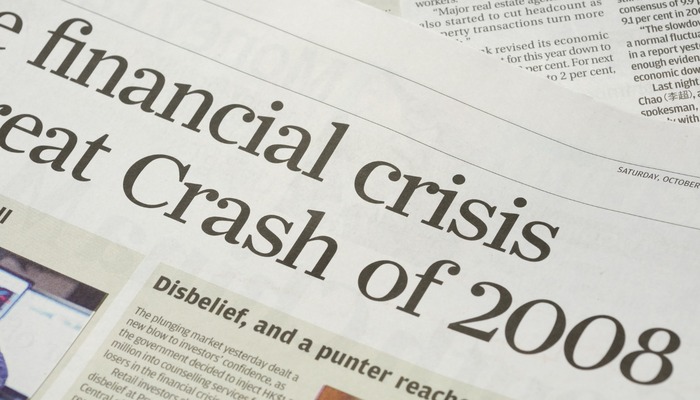No matter how solid a business plan is or how reliable the projections appear to be, the private sector will always experience unforeseen events that impact the bottom line. Every company is exposed to some form of risk that will lower profit margins, sending shares spiralling downwards or even bankrupting the firm. That is the nature of operating an enterprise – large and small.
In today's world, there is a myriad of factors that threaten a company's ability to meet targets, achieve profit goals and satisfy shareholders. Some of the risks may come from internal sources, and many of the hazards are not the fault of any one specific person at the company.
Types of Business Risk
Is it possible to entirely shelter the business from danger? Not quite, but you can protect yourself from the effects of business threats by understanding the different types, from exchange rates to environmental. To help, we have compiled a breakdown of some of the most common types of business risk to help you remedy the setbacks.
1. Competitive Risk
In a highly advanced global economy, competition has never been as fierce, ubiquitous and intense as it is today. Yet while this is good news for consumers, it is not such a positive development in international business. As a result of worldwide commerce, some companies can offer lower prices than others, which immediately attracts shoppers.
Suffice it to say, thanks to Amazon and Walmart, consumers almost always expect the lowest possible price for a toaster or a tea kettle. If you cannot give it to them, then they will open their smartphones and navigate these two retailers' websites or walk across the street and determine if your competitor has a better price-tag.
Even big-box retailers have been shut down due to competition, too; just ask Kmart in the early 2000s.
Competitive pricing can be one of the most significant risks for enterprises to overcome, especially for brick-and-mortar enterprises that also have to contend with ballooning overhead and labour costs.
2. Innovation Risk
Innovation risk is two-fold.
On the one hand, your company is failing to innovate its goods or services, seeing sector rivals surpass you in every imaginable way. Your iconic product is no longer relevant, exciting or new. Take Blackberry, for example; it was the smartphone device until Apple's iPhone demolished the company. Alternatively, look at MySpace, which was a popular social network for the younger generation, until Mark Zuckerberg's Facebook came up with better ideas, tools and services and captured a far greater portion of the market.
On the other hand, perhaps your company is innovating too much, and the rest of the marketplace is failing to catch up. In other words, you have a product that might be way ahead of its time and is not serving a demand right now. In the 1990s, there were many social media websites, such as Bolt and Six Degrees, but many people were still learning the intricacies of the internet. As a result, these web portals were not leveraged as much as they would have been today.
3. Economic Risk
The economy is always in focus. A weakness in one sector could have a domino effect, leading to a potential slowdown in another market, which might raise costs and isolate a part of your supply chain. Ever since the financial crisis of 2008, the world has been waiting for the next major downturn, monitoring every report to ensure that the next Lehman Brothers-style collapse is not a recession away.
Economic risks routinely play a factor in the success or failure of a company. A slowdown in consumer spending, a decline in exports or a diversion of resources from public works projects; the weakness in an economy threatens everything a company has gained during the boom phase of the business cycle.
4. Reputational Risk
In business, reputation is critical. Negative consumer opinion of your brand can tarnish your company, while, alternatively, a glowing public perception can allow you to thrive in a strong economy and survive in a declining one.
If consumers have a negative opinion of your brand, then they will typically avoid your outfit. However, if the public has a glowing perception of your organisation, whether it is your customer service or your high-quality product, then they will turn to you for their needs.
Over the years, corporate reputations have taken significant hits. Sears, which still faces a myriad of problems, had a hard time escaping the image of being undersupplied and overpriced with terrible customer service, while SeaWorld has had to overcome multiple exposes on its horrendous habitats for Orca whales. Target, too, had a tough mountain to climb in 2013 when the retail giant suffered a massive data breach that affected 110 million customers.
 payphoto / Deposit PhotosTarget was the victim of a massive data breach in 2013
payphoto / Deposit PhotosTarget was the victim of a massive data breach in 2013
5. Credit Risk
A business will meet a credit risk when it has a revenue-generating model based on accounts receivable. This is when an amount is owed to a company, after providing goods or services on credit to another business.
For example, a supplier will have an account receivable when it unloads a truckload of nylon stockings or bankers' lamps to a vendor on November 15 and will have 30 days to pay.
The credit risk is amplified when there is a delay in payments, a loss on principle and perhaps legal costs if a business needs to take action against a debtor for failure to pay.
6. Exchange Rate Risk
An exchange rate risk has historically affected the import-export industry, but in today's global supply chain, everyone is impacted by volatile valuations in currency pairs. Businesses that operate worldwide will be exposed to a basket of currencies, which can affect the value of assets, transactions and operating margins.
The world might soon be engaged in a currency war, meaning exchange rates will be targeted as central banks participate in a race to the bottom, while the potential impact of cryptocurrencies on business remains to be fully seen.
7. Compliance Risk
Last year, it was reported that 70% of businesses across the globe failed to comply with the General Data Protection Regulation (GDPR), a European Union (EU) law that focuses on data privacy and protection. According to the report, most businesses in retail, media and finance are failing to meet the basic GPDR requirements, which could prompt lawmakers and bureaucrats to act.
Indeed, one of the highest costs for companies – large and small – is compliance. It is not so much abiding by the rules and regulations laid out by the three levels of government, but rather the fallout should the accounting or legal department at your firm make a mistake by submitting the wrong document, or omitting an essential piece of information by accident.
Since regulators are apt to home in on businesses and search for a slight error, slapping these entities with fines, there can be no room for error.
8. Environmental Risk
Environmental risks are becoming more prevalent, more severe and more in focus – natural and humanmade. There are internal and external factors at play.
An example of an internal issue is when a business practice affects the environment, similar to what we saw with British Petroleum in 2011 in the Gulf of Mexico. It was a public relations nightmare for the energy juggernaut, which it has still not fully recovered from today.
An example of an external problem, meanwhile, might be a weather-related event. Indeed, your business is more at risk if you are located near the Atlantic Ocean and face hurricanes for a few months of the year, or if you are in Southeast Asia where there is plenty of seismic activity.
9. Political Risk
In the last 20 or so years, politics has never been as in-your-face as it has been since Brexit, the 2016 presidential election and the rise of populism around the world. Because of this, there is a lot more uncertainty in the political arena, leaving companies flummoxed as to what to expect.
These political risks leave the private sector unsure what to anticipate in the immediate future, especially if the issues at hand relate to tax policy. Moreover, private capital may not be fully utilised if there is political upheaval, with the resulting chaos lingering for an extended period and potentially harming the marketplace.
10. Resource Risk
In the United States, there are more open jobs available than there is the number of people looking for work. This has been the case for nearly two years, leaving the conclusion that there is a labour shortage in the country. This is not exclusive to the US, either, with a skills shortage – hard and soft – occurring all across North America and Europe, with individuals unable to meet the labour demands of the job market.
When this happens, a key business risk is that companies cannot bring goods to market, manufacture products or handle day-to-day corporate responsibilities. Perhaps this is contributing to the rapid investment and expansion of automation. That said, productivity levels might be higher than they are today if employers could find trained employees.
11. Seasonal Risk
A huge gamble that entrepreneurs take is adopting a seasonal business model. This is when a venture depends solely on seasonal revenue, such as a ski resort in the winter or a water taxi in the summer. But what happens if the snow is not falling in the December-to-March period? What if temperatures are too cold in the spring and summer for people to take a water taxi?
Despite the obvious nature of this risk, it is one that many firms have a hard time managing and preparing for, although business owners who can diversify their product or service are more likely to be able to survive.
---
A venture's demise may be the result of a handful of risk factors, not just one. To weather the storm clouds, though, the first step is to identify all potential risks. The next series of steps involve taking action, recording the situation and implementing a comprehensive risk management strategy that is comprised of ideas and procedures that grapple with the problem. You should never bury your hand in the sand, either; as a leader, it is your job to come up with a sound plan to ensure the company lives on.
What other types of risk should business owners be wary of? Let us know in the comment section below.
